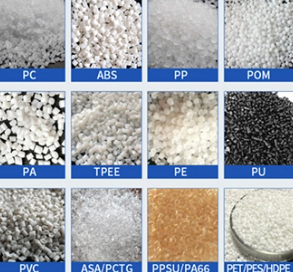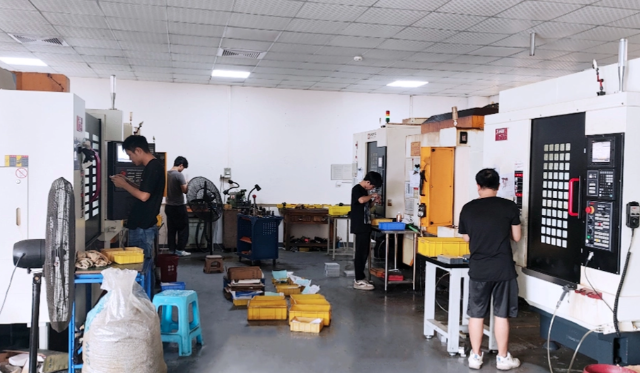

Views: 0 Author: Site Editor Publish Time: 2025-09-24 Origin: Site












Ever wondered what goes into the plastic parts all around you? From the dashboard of your car to the case of your phone, many of these products are made using injection molding. The secret lies not only in the process but also in the material. Pick the wrong resin, and a part may crack, warp, or fail. Choose wisely, and you get strength, durability, and the right look.
This guide explains what material injection molded parts are made out of, why it matters, and how different plastics shape the products we use every day.
Material selection is a pivotal aspect of the injection molding process. While the mold imparts the physical shape to the part, the material dictates its performance characteristics. Different stakeholders in the product development process have distinct priorities when it comes to material choice:
Engineers seek materials that offer superior strength, fatigue resistance, and long-term stability to ensure the part can withstand operational demands without failure.
Businesses are concerned with the cost of the material, the speed of production, and the reliability of supply, as these factors directly impact profitability and efficiency.
Consumers are more attuned to the aesthetic qualities such as look and feel, as well as the durability of the product, which influences their purchasing decisions.
Choosing the wrong material can have serious consequences. For instance, a medical syringe made from an inappropriate material might become brittle and break, a car bumper could be too weak to provide adequate protection, or a food container could become a safety hazard if it leaches harmful chemicals. Thus, selecting the appropriate plastic is one of the most critical decisions in injection molding, as it has far-reaching implications for product safety, functionality, and market success.
Injection molded parts are typically made from thermoplastics, elastomers, or synthetic rubbers. Each group has unique properties that suit different applications.
| Category | Examples | Key Strengths | Common Uses |
|---|---|---|---|
| Rigid Thermoplastics | ABS, PC, PP, Nylon, PMMA | Strong, durable, versatile | Automotive, electronics, packaging |
| Elastomers | TPE, TPU | Flexible, shock absorbing | Grips, footwear, seals |
| Synthetic Rubbers | NBR, EPDM, Silicone | Chemical + heat resistance | Gaskets, hoses, O-rings |

Rigid plastics are the backbone of injection molding. They form strong, stiff, and durable parts. Many are recyclable and cost-effective.
Strong, impact-resistant, and tough.
Handles moderate heat.
Attractive surface finish.
Applications: dashboards, computer keyboards, protective cases.
Extremely tough and impact-resistant.
Transparent like glass but lighter.
Works well under heat.
Applications: safety helmets, eyewear lenses, medical housings.
Lightweight and flexible.
Excellent chemical resistance.
Handles repeated bending.
Applications: packaging, food containers, syringes.
Resists wear and friction.
Can be reinforced with glass fibers.
Stays strong under stress.
Applications: gears, bearings, power tool housings.
Crystal-clear transparency.
Weather and UV resistant.
Polishes to a glossy finish.
Applications: display panels, light covers, optical lenses.
Elastomers offer softness, stretch, and shock absorption. They are perfect when rigid plastics alone can’t provide comfort or grip.
Feels like rubber, processes like plastic.
Wide range of hardness levels.
Easy to recycle compared to vulcanized rubber.
Applications: toothbrush grips, phone cases, overmolded handles.
Exceptional abrasion resistance.
High elasticity.
Oil and grease resistant.
Applications: footwear soles, watch straps, tubing.
Synthetic rubbers fill the niche where heat, oils, and weather would destroy most plastics.
Nitrile Rubber (NBR): Resists oils and fuels. Used in gaskets and seals.
EPDM: Handles outdoor weather and UV exposure. Common in window seals.
Silicone: Performs across wide temperature ranges. Great for medical and food uses.
These rubbers aren’t as recyclable as thermoplastics but remain vital for performance-critical applications.
Selecting the optimal resin for injection molding is both an art and a science, requiring a strategic approach to balance performance, cost, and the intended end use of the part. The right material can significantly impact the part’s durability, functionality, and overall success in the market.
Choosing a material with the right mechanical properties is essential for meeting the specific requirements of your application.
For parts that require high stiffness, consider materials such as ABS (Acrylonitrile Butadiene Styrene), PC (Polycarbonate), or Nylon. These materials are known for their ability to resist deformation under load, making them ideal for structural components.
If your application demands flexibility, materials like PP (Polypropylene), TPE (Thermoplastic Elastomer), or TPU (Thermoplastic Polyurethane) are excellent choices. These resins offer the elasticity needed for parts that must bend or stretch without breaking.
For parts exposed to wear and tear, look for materials with enhanced wear resistance, such as reinforced Nylon or TPU. These materials can withstand friction and abrasion better than many other plastics, extending the life of the part.
The thermal properties of the material must align with the temperature conditions the part will encounter during use.
For parts that will be used in high-heat environments, materials like PC, Nylon, or Silicone are suitable. These resins can maintain their structural integrity and performance at elevated temperatures, making them ideal for automotive and electronics applications.
For everyday uses where the part will not be exposed to extreme heat, materials such as ABS, PP, or PMMA (Polymethyl Methacrylate) are more appropriate. These materials offer good performance at room temperature and are cost-effective for general-purpose applications.
The material’s resistance to environmental factors and chemicals is crucial for ensuring the part’s longevity and reliability.
Parts that will be exposed to UV light, such as outdoor applications, should be made from materials like Acrylic or EPDM (Ethylene Propylene Diene Monomer). These materials resist degradation from UV rays, maintaining their appearance and strength over time.
For applications where the part will come into contact with moisture or water, materials like PP or Nylon offer excellent moisture resistance. This prevents swelling, warping, or other moisture-related issues that can compromise the part’s performance.
In environments where the part may be exposed to chemicals, materials like PP, TPU, or NBR (Nitrile Butadiene Rubber) are preferred. These materials can resist chemical attacks, ensuring the part remains functional and durable in chemically challenging conditions.

ABS and polypropylene lead the way. They are cost-effective, easy to mold, and reliable for many consumer and industrial parts.
Yes. Metal Injection Molding (MIM) exists, though plastics remain far more common.
Nylon with glass fiber reinforcement, polycarbonate, and certain high-performance blends.
Yes. Recycled PP and PE are often used, along with biodegradable resins like PLA.
Rigid plastics provide structure. Elastomers add comfort, flexibility, and grip. Many products combine both in hybrid designs.
So, what material are injection molded parts made out of? The choice of material for injection molded parts is a critical decision that hinges on the desired performance, cost, and purpose of the final product. Dongguan Quanhao Plastic Mold Co., Ltd. specializes in providing a wide array of materials to meet various industry needs and applications.
When selecting the appropriate material for your injection molded components, consider factors such as the required strength, flexibility, heat resistance, and aesthetic appeal. Dongguan Quanhao Plastic Mold Co., Ltd. offers expert guidance and a wealth of experience in material selection to ensure that the material you choose aligns perfectly with your project’s specifications and goals.